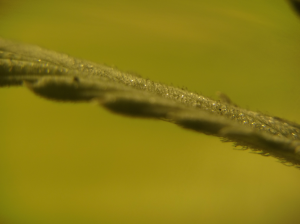Flavonoids 101

A beginner's guide to Flavonoids
We all are familiar with terpenes at this point, but have you had an opportunity to explore the world of flavonoids? Here we will give you a brief overview of what they are, what they do, and what that means to you!
ORIGINS
In culinary history flavonoids have always played a large role. Found naturally in many fruits and vegetables (as well as other plant products like wine, tea, and chocolate), we interact with flavonoids on a daily basis. There are six different types of flavonoids found in food, and each kind is broken down by your body in a different way.
Our research regarding Flavonoids in food have found that they are rich in antioxidant activity and can help your body ward off everyday toxins. Other research suggests that they can regulate cellular activity and fight off free radicals that cause oxidative stress on your body. In simpler terms, they help your body function more efficiently while protecting it against everyday toxins and stressors.
FLAVONOIDS in CANNABIS
Flavonoids are chemical compounds that can be found in cannabis and other plants. Thousands of flavonoids are found throughout nature, but only a few appear to be unique to cannabis and are referred to as cannflavins. About 20 varieties of flavonoids have been identified in cannabis and are believed to make up approximately 10% of the plant’s total composition.
These compounds are best known for creating the color you see in the flower—these colors are used to attract pollinators and potentially protect plants from UV rays, pests, and disease. Example: Purple hues expressed by some cannabis strains are primarily caused by a flavonoid called anthocyanin.



SOME SCIENCE
Flavonoids may also influence the smell and effect of the flower, although more research in this area is needed. One research study showed promise using Cannflavin A as an anti-inflammatory but we will not know more until research is complete. Given the way other cannabinoids and terpenes interact, Flavonoids most likely work synergistically with other cannabis compounds.
Another heavily researched aspect to flavonoids in food is its work with inflammation; one of your body’s immune responses. Allergens, germs, toxins, and other irritants can trigger inflammation that results in uncomfortable symptoms. Flavonoids may help your body dismiss that inflammatory reaction so that those symptoms are reduced.
How flavonoids work in cannabis and in conjunction with other cannabinoids and terpenes has not been studied in depth enough yet to know the full extent of their capabilities. It is important to remember that the effects of cannabis are the result of complex developments of cannabinoids, flavonoids, and terpenes that take place in the plant’s glandular trichomes. Consult a physician before consulting new strains if underlying conditions exist.
In summary
Sourcing
National Library of Public Medicine, “Flavonoids: an Overview”, https://www.ncbi.nlm.nih.gov/pmc/articles/PMC5465813/
WebMD’s, “Foods High in Flavonoids” https://www.webmd.com/diet/foods-high-in-flavonoids



Leave a Comment